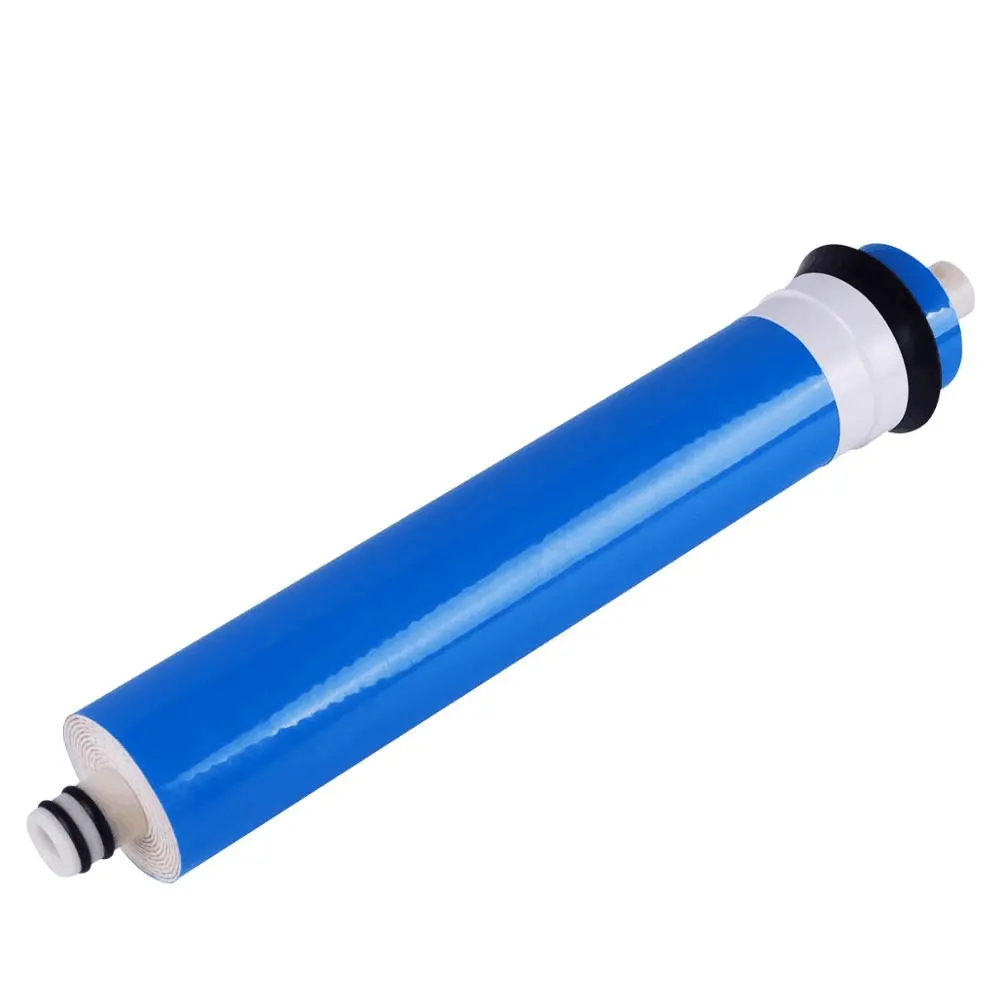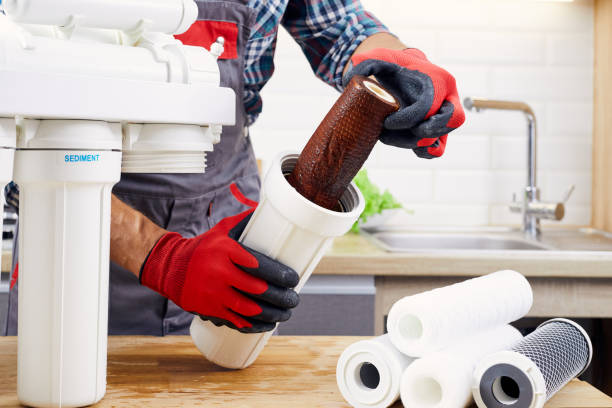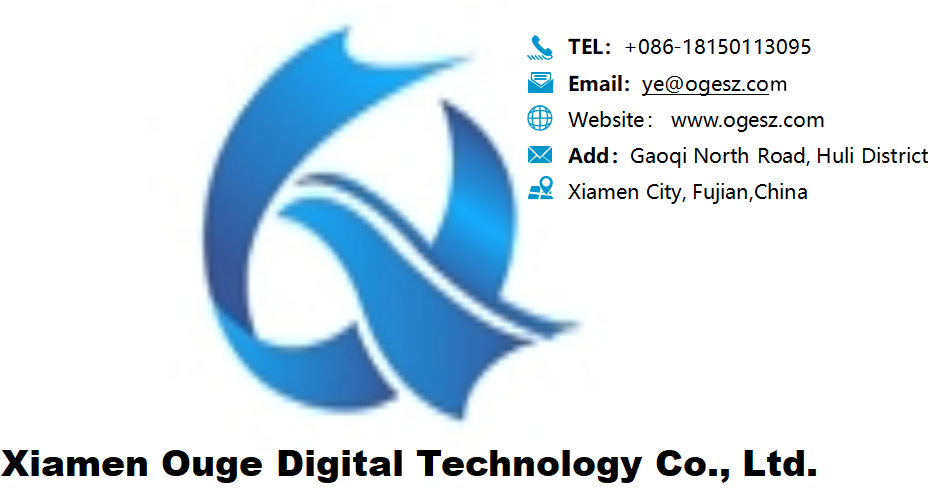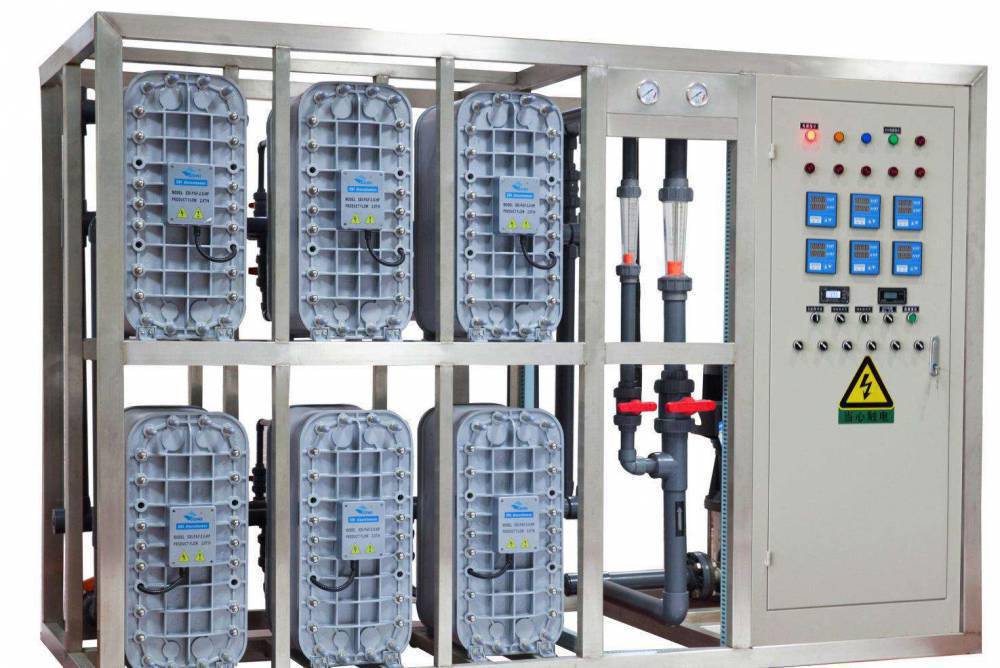Reverse osmosis membrane elements can be used for about 2~3 years in general. If you want to extend the service life, you can reverse osmosis membrane element cleaning, usually divided into physical flushing and chemical flushing two ways, when the physical flushing has not been able to make the performance of reverse osmosis membrane recovery, you should need to carry out chemical cleaning.

Reverse osmosis membrane cleaning
1 to determine the cleaning situation:

(1) The standardized fresh water production has decreased by more than 10%.
(2) The standardized salt permeability has increased by more than 10%.
(3) The differential pressure between the feed water and the concentrated water has increased by more than 10% after temperature calibration in order to maintain the normal fresh water flow.
(4) The internal unit had serious contaminants and scaling materials.
(5) Before the RO unit is out of service for a long period of time.
(6) RO unit routine maintenance
Judge whether the reverse osmosis system to implement cleaning before, should also be considered comprehensively some of the following may produce the above phenomenon of other reasons:
☆ Decrease in operating pressure (pressure control device malfunction and high-pressure pump abnormalities);
☆ Decrease in water temperature (heater failure, or seasonal changes in water temperature);
☆ Increase in the salt content of the feed water;
☆ Abnormal pretreatment;
☆ Concentrated water seeping into fresh water due to membrane damage, misalignment of the center tube of the tandem membrane element, or poor sealing of the O-ring of the pressure vessel.
2 Pollutants
Common pollutants in the reverse osmosis membrane element are mainly CaCO3, CaSO4, BaSO4, SrSO4, metal oxides, silicon deposits, organic matter and biological slime. When the scale inhibitor dosing system or acid addition system fails, CaCO3 may be deposited in the membrane element, and chemical cleaning methods should be taken to cycle cleaning or overnight immersion.

3 Formulation
Different pollutants cause different degrees of damage to the membrane, different pollutants apply different cleaning solutions.
4 Cleaning equipment
(1) reverse osmosis cleaning system
Generally consists of cleaning pumps, pharmaceutical preparation box, 5-20um security filters, heaters, related piping valves and control instruments.

(2) operation
Cleaning methods include static immersion and cyclic cleaning. Static immersion with a cleaning solution to soak the membrane, depending on the degree of contamination, the time is roughly 1-15 h. The general steps of cyclic cleaning is:
1 pump fresh water from the pharmaceutical preparation box into the pressure vessel, and discharge for a few minutes.
2 Prepare a cleaning solution with fresh water in the pharmaceutical preparation tank.
3 Cycle the pressure vessel with the cleaning solution for 1h or for a predetermined time. The cleaning flow rate can be determined according to the following table, and when the contamination is serious, the cleaning flow rate can be increased to 150% of the resin in the table. At this time, the cleaning pressure drop is larger, generally control does not exceed (0.10-0.14MPa) / root membrane element or 0.4MPa / root membrane module. Just started into the drug cleaning, available in the table 50% of the flow value of the heated cleaning fluid into the pressure vessel, control pressure, in order to be able to overcome the pressure drop between the water inlet and outlet water and no fresh water outflow is appropriate. In order to avoid the cleaning solution is diluted, you can open the thick water discharge valve, first discharge the system water before cleaning. Reverse osmosis system can be divided into sections for cleaning. Cleaning direction is the same as the direction of operation, do not allow reverse cleaning, otherwise it may cause the membrane roll protrusion and damage to the membrane element.
4 cycle cleaning is completed, and then use fresh water to wash the pharmaceutical preparation box.
5 Rinse the above pressure vessel with fresh water.
6After flushing, run the reverse osmosis system with the fresh water discharge valve open until the fresh water is clean and free of foam or cleaning liquid, which usually takes 15-30min.

 RO Pretreatment Practical Handbook: Detailed Analysis of Four Major Raw Water Processes
RO Pretreatment Practical Handbook: Detailed Analysis of Four Major Raw Water Processes
 The “Heart Switch” of Reverse Osmosis Systems: Feed Water Pressure
The “Heart Switch” of Reverse Osmosis Systems: Feed Water Pressure
 Essential Water Treatment Terminology Every Water Purification Engineer Uses!
Essential Water Treatment Terminology Every Water Purification Engineer Uses!
 What is EDI Electrodeionization Technology? Reverse Osmosis + EDI vs Traditional Ion Exchange: Your Ultimate Selection Guide!
What is EDI Electrodeionization Technology? Reverse Osmosis + EDI vs Traditional Ion Exchange: Your Ultimate Selection Guide!